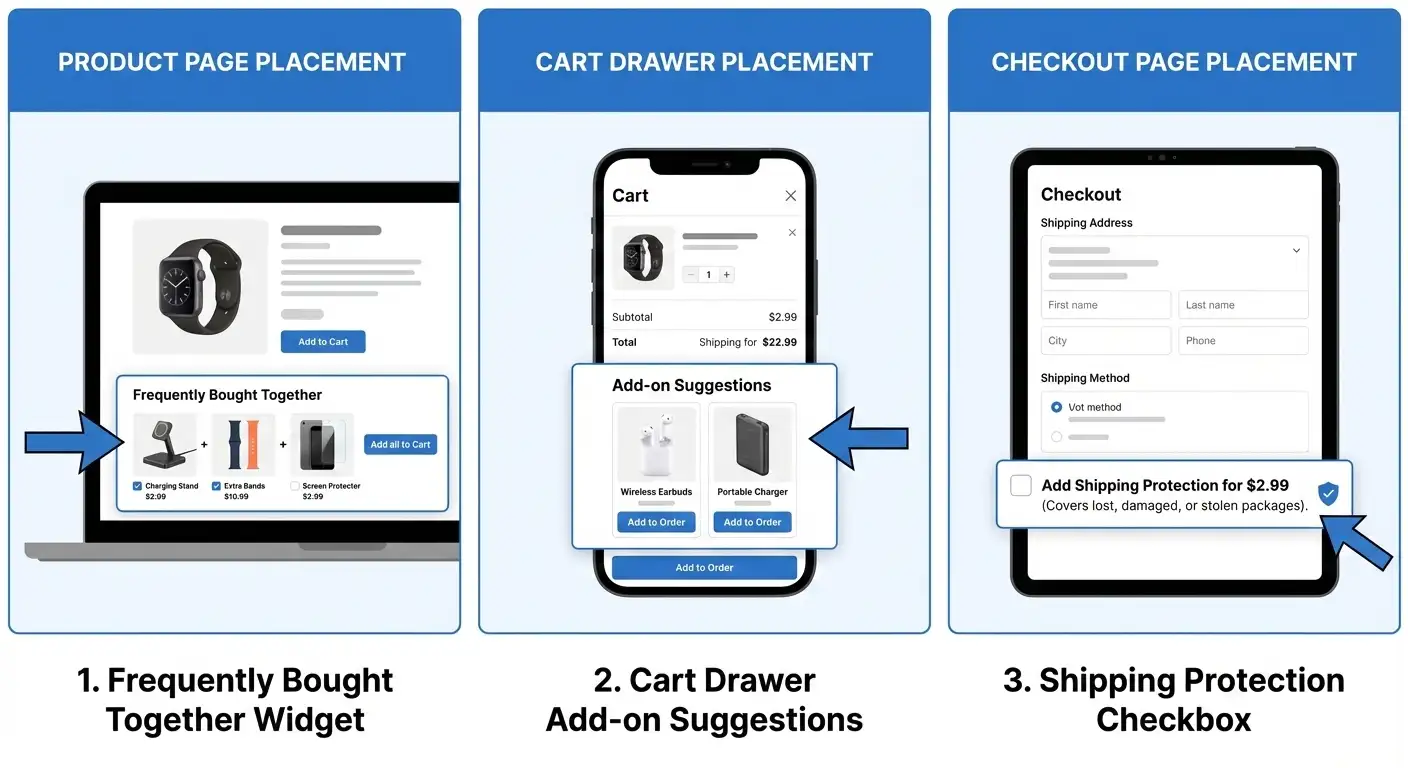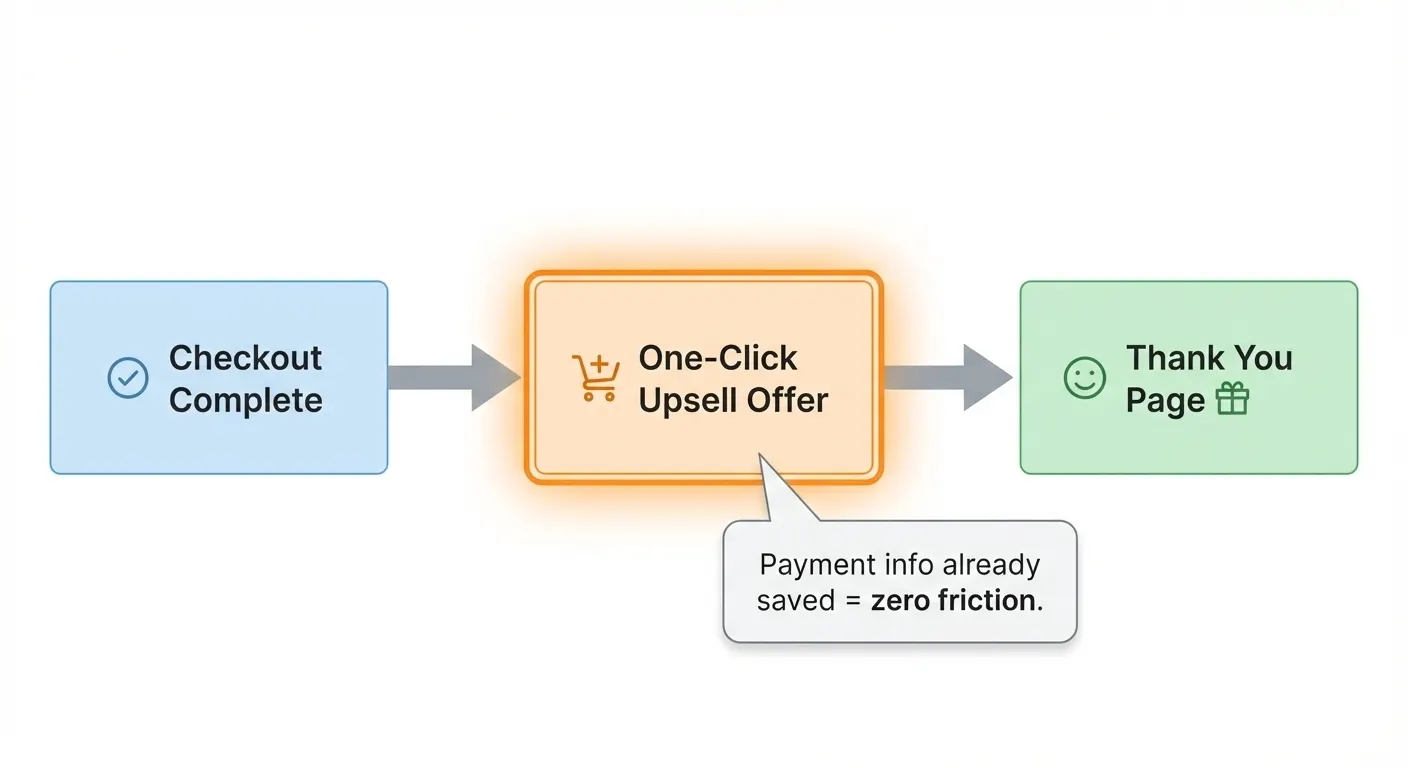Pre-Purchase vs. Post-Purchase Upsell: Which Strategy Wins for Shopify in 2026?
Learn all about Post Purchase vs Pre Purchase upsell.

Almost every Shopify store owner is concerned about how to increase AOV without spending more on ads. Upsell is usually always the answer, but then it raises another question: When do I upsell? Before checkout, when everyone sees the offer, but the risk of losing the sale is high? Or after checkout, when the sale is secure but fewer people ever see it?
This guide breaks down the pre purchase vs post purchase upsell debate using real Shopify data, psychology, and conversion benchmarks.
Having looked at data across 1,500+ Shopify stores using Cart-X, we found that for most stores, post-purchase upsells outperform pre-purchase offers by a wide margin. Yet, we’ve seen high-performing stores combine both offers to form a hybrid strategy.
In this guide, we’ll walk through:
- The difference between pre and post purchase upsells
- The conversion benchmarks behind both strategies
- When to show upsells on Shopify for maximum impact
- And how top Shopify stores use a hybrid approach to maximize every order
By the end, you’ll know which strategy fits your store today and how to set it up without breaking your checkout.
If you are new to upselling, you may want to start with our Complete Guide to Increasing Your Shopify AOV in 2026 to get the fundamentals first. If you’re deciding which strategy to use next, you’re in the right place.
What Is a Pre-Purchase Upsell? (The “High Visibility” Play)

Pre-purchase offers often appear as a checkout upsell, where customers are asked to add something before payment. Its purpose is to catch the customer’s attention before they finalize the transaction. On Shopify, these upsells usually show up in a few familiar places:
- Product pages, with “Frequently Bought Together” bundles
- Cart drawers or cart page upsells suggesting add-ons
- Checkout, often as a simple checkbox for shipping protection or priority processing
Pre-purchase upsells work because these offers seem impossible to miss, but that is not the only reason merchants like them. There is also the visibility factor because 100% of everyone who adds a product to the cart is exposed to the offer, not just those who convert.
Pre-purchase upsells are also great for logical add-ons. For instance, if someone is buying a toy, batteries make sense as an upsell offer. If they’re buying shoes, socks feel like a proper add-on. The value of the upsell is clear from the outset, which makes the decision feel easy.
Because pre-purchase offers add friction, they can quietly work against your cart abandonment solutions if overused. This comes in the form of having to make extra decisions, click something extra, and these can lead to hesitation. When the road to checkout seems too long, cart abandonment can happen. That’s why pre-purchase upsells, while visible, often come with a hidden cost: lower checkout conversion rates. They’re powerful. But they’re also risky if you lean on them too hard.
What Is a Post-Purchase Upsell? (The “Zero-Risk” Play)

A post-purchase or thank you page upsell turns the confirmation page into a revenue opportunity. lt appears after the customer has paid, but before they land on the final confirmation or thank-you page. The timing and positioning of the upsell make the outcome different from the pre-purchase upsell. Here’s why:
With Shopify’s native checkout flow, the customer’s payment and shipping details are already securely stored. That means you can present an additional offer they can accept with a single click. This is what’s known as a one-click upsell, and it’s the brain behind some of the highest-converting Shopify funnels today.
So why do post-purchase upsells convert so well?
First, there’s zero risk to the original sale. The payment has already gone through. Even if the customer ignores the upsell entirely, you still keep the order and the customer.
Second, the timing is perfect. Right after checkout, customers are in a peak buying state, and trust in your brand is already established. The “should I buy?” question has already been answered, and resistance is at its lowest.
Finally, post-purchase upsells give customers a clean shopping experience. They ensure shoppers complete the first purchase and keep the checkout interruption-free. At this point, the upsell is more like a helpful follow-up, and not an obstacle.
The only downside post-purchase upsells have is visibility. Because they are shown only to shoppers who complete the checkout, they aren’t seen by everyone. So if 60-70% of your traffic abandons the cart, they’ll never see it. But as you’ll see in the data, what post-purchase upsells lose in visibility, they more than make up for in conversion efficiency.
The Data: Which One Actually Converts Better?
Considering the pros and cons of both upsell types, you might be contemplating on the right one to use. Let’s examine this data gathered across 1,500+ Shopify stores using Cart-X:
From the data shown above, you can see that pre-purchase upsells win on exposure, but post-purchase upsells win on conversion and revenue impact. On average, post-purchase offers convert two to three times higher, largely because they remove friction and protect the original sale.
In simple terms, more people say yes when saying no doesn’t threaten the purchase they already made. This is what makes post-purchase upsell a success.
The Great Debate: Side-by-Side Comparison
If you strip everything down, the comparison between both upsell types can be summarized in the table below:
When it comes to pre purchase vs post purchase upsell, the difference lies in conversion efficiency and risk. So no upsell strategy is bad, they just solve different problems.
When to Use Which Strategy? (The Cart-X Take)
High-converting stores don’t ask which upsell is better. They design a Shopify upsell strategy that fits buyer intent. These are some common scenarios that show how each upsell fits into the customer journey and where it delivers the most value
Scenario A: Use pre-purchase for soft upsells
If the offer is low-commitment and requires almost no thinking. Examples are:
- Shipping protection
- Gift wrapping
- Priority processing
Scenario B: Use post-purchase for hard upsells
If you’re offering another physical product, especially anything higher-ticket, wait until after checkout. Don’t distract someone buying a $200 jacket with a $50 accessory before they pay. Let them secure the main item first. Then offer the add-on with one click. This protects conversions while increasing order value.
Scenario C: The hybrid strategy (where the real money is)
The best brands don’t choose. They use:
- A light pre-purchase upsell for something simple
- A strong post-purchase upsell for additional products
This way, every order has multiple chances to increase in value without putting checkout at risk.
If you’re setting up your first upsell today, start with post-purchase. It’s the safest place to learn. You can test products, discounts, and messaging without risking your core conversion rate. And that’s exactly why most Cart-X merchants start there.
The Psychology Behind Post-Purchase Success
Post-purchase upsells work because they align with how people make decisions. Once you understand what’s happening in a customer’s mind after checkout, the better you can make upselling work for you. This is the science behind why post-purchase upselling works:
- The Peak Trust Moment
When a customer completes a purchase, they’ve crossed the hardest psychological hurdle: trust. They’ve trusted your brand with their money, their address, and their expectations. This trust lowers their guard and creates a short window where skepticism drops.
At this moment, they feel confident that they picked the right brand. This is the moment when additional suggestions feel helpful. A well-timed post-purchase offer feels like a continuation of a decision they already feel good about, and less than a sales strategy.
- The Endowment Effect
Once someone buys something, their brain starts treating it as theirs, even before it’s delivered. This is a well-documented psychological principle called the endowment effect. A phone case offered before checkout feels optional. A screen protector offered after checkout feels like protecting something they already own. That’s why:
- A warranty feels smarter after purchase
- An accessory feels more relevant after checkout
- A bundle upgrade feels easier after commitment
At this stage, you’re no longer asking, “Do you want to buy something else?” You’re asking, “Do you want to make what you just bought even better?”Zero Risk, Zero Friction
Finae’s the most practical reason post-purchase upsells outperform everything else: friction is gone. Shoppers don’t need to re-enter payment details or fill out additional checkout forms. With a true one-click upsell, accepting the offer is easier than declining it.
And when you remove friction at the exact moment buying intent is highest, conversion rates jump. That’s what we see across thousands of Cart-X funnels.
If you want to go deeper into the behavioral side of this, we break it down fully in our guide on The Psychology of One-Click Upsells
Both Strategies Using Cart-X
Running a hybrid upsell strategy can be simple. Cart-X was built to run pre-purchase and post-purchase upsells from one place, without slowing down your store. Here’s how quickly you can launch a post-purchase offer:
Step 1: Install Cart-X
Head to the Shopify App Store and install Cart-X with one click.
Step 2: Create your first funnel
Name it something simple, like “Post-Purchase: Best Sellers.” This keeps things organized once you start testing.
Step 3: Choose your upsell
Select the upsell product, add a discount if it makes sense, and publish. You can have a live, revenue-generating post-purchase offer running in a few minutes.
From there, you can:
- Add downsells if someone declines
- A/B test different offers
- Track exactly how much extra revenue each funnel generates
But none of that is required on day one. Start simple and keep updating as you see fit.
The Verdict: Post-Purchase Wins (But Hybrid Maximizes)
If you can only choose one strategy, choose post-purchase. Post-purchase upselling delivers:
- Higher conversion rates
- Larger AOV lifts
- Zero risk to your core sale
- Checkout conversion
But if you want to squeeze every last drop of value from your traffic, use the hybrid strategy: Pre-purchase for small add-ons and post-purchase for meaningful product offers.
Ready to Stop Leaving Money on the Table?
You’ve seen the data and you now understand the psychology. What’s left now is execution. With the right post-purchase offer, your thank-you page can become the most profitable moment in your entire funnel.
Stop letting your thank-you page be a dead end. Turn it into a revenue engine.
Start your 30-day free Cart-X trial today and set up your first post-purchase upsell in minutes.
Frequently Asked Questions
Does post-purchase upselling work on Shopify mobile?
Yes, Most Shopify traffic is mobile and Cart-X’s one-click offers are fully mobile-optimized, so the experience stays seamless on any device.
Can I use post-purchase upsells with Apple Pay or Shop Pay?
Yes.
Cart-X integrates natively with Shopify’s accelerated checkouts, including Shop Pay, Apple Pay, Google Pay, and PayPal. One-click offers work seamlessly across all of them.
What’s a good conversion rate for upsells?
As a general benchmark:
- Pre-purchase upsells: 3–5%
- Post-purchase upsells: 10–15%+
Many Cart-X merchants regularly see post-purchase funnels convert above 20%, especially when the offer is relevant and priced under 50% of the original purchase.
Don't miss out on expert e-commerce and marketing insights! Subscribe to our newsletter for valuable tips in just a few clicks.


.svg)







